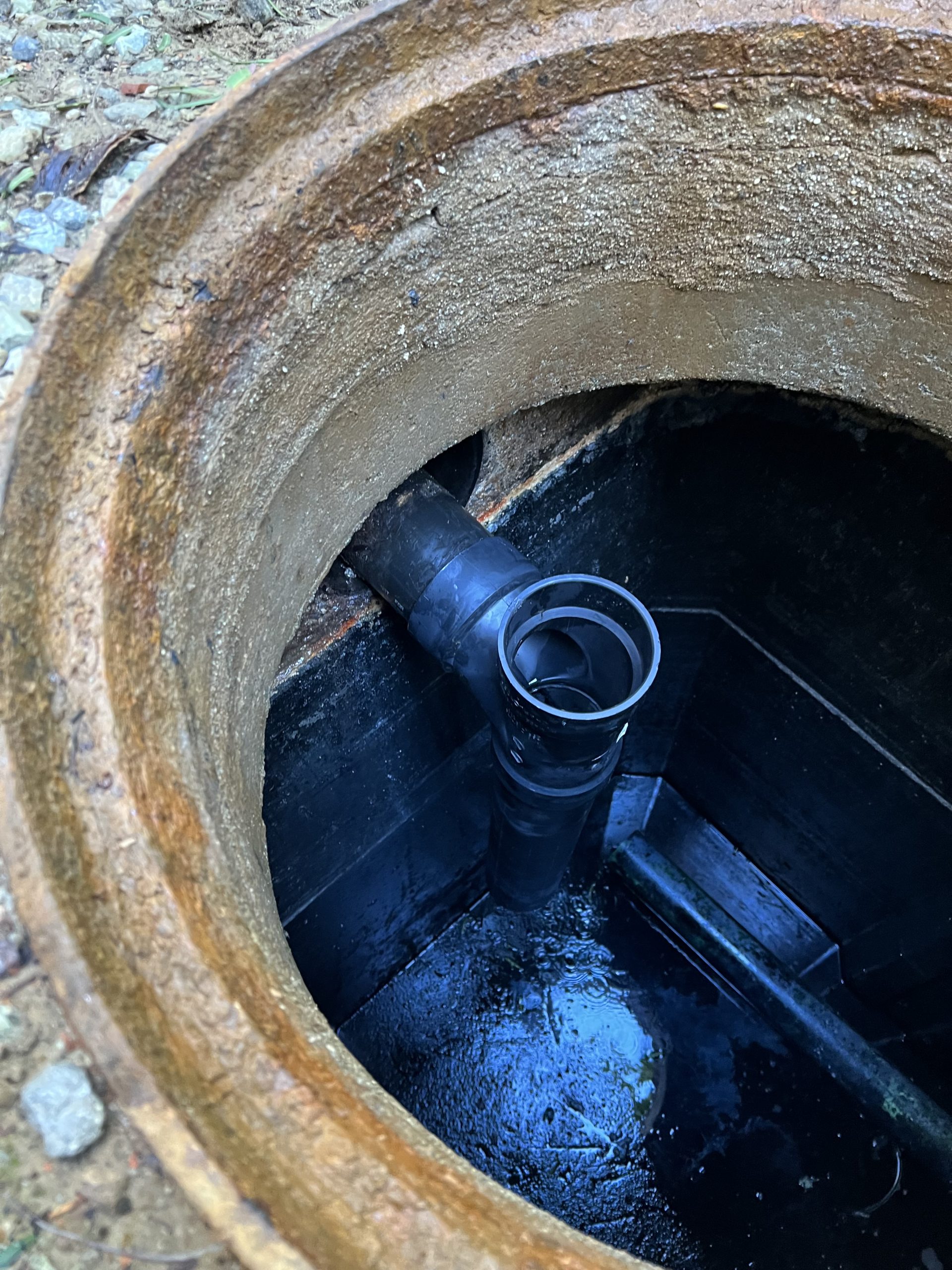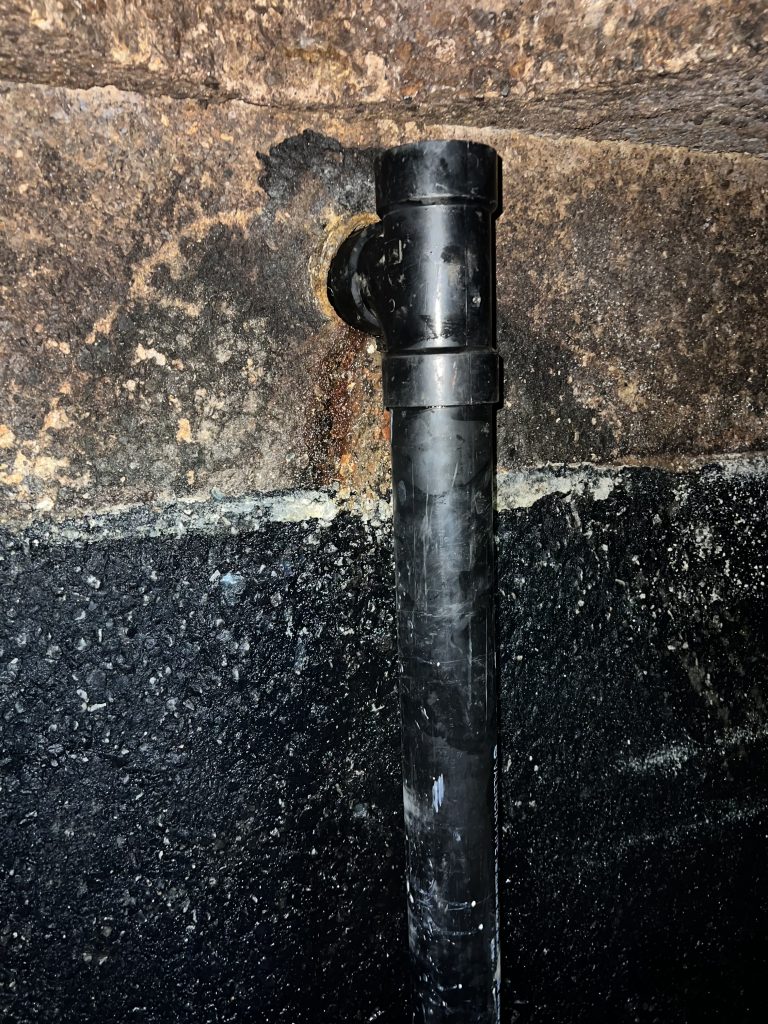Among the crucial equipment in a restaurant kitchen, a grease trap ensures that wastewater flow runs smoothly under the restaurant drain. The grease trap filters wastewater to catch all the greasy stuff, including animal fats, vegetable oils, and grease before it clogs up the pipes. But inside the trap, there’s a small component that anyone hardly talks about- the grease trap BAFFLE T also known as a STAND PIPE, which plays a vital role in the total grease management operation. It helps direct all the grease and gunk where it needs to go so it doesn’t cause any problems down the plumbing system.

BAFFLE – T
Designed To Prevent FOGS Waste From Back Flowing and Releasing To The Sewer Connection
Broken / Fallen Baffle T Inside The Grease Trap / Interceptor
A proficiently working Baffle T or Stand Pipe ensures the accuracy of a grease trap. A broken baffle T can lead to several other issues within a grease trap or interceptor leading to major back up or overflow. So, recognizing the odd signs of a broken baffle t and taking the right step at the right time is crucial for restaurant owners to benefit in the long run. Let us take a look at some of the common signs that indicate a broken Baffle T.
Overflow: If a grease trap or interceptor is missing its baffle, it can cause problems like backup and overflow. The baffle is important because it stops grease and solids from clogging up the pipes by acting as a barrier between the plumbing and floating grease on the surface of the device. Without it, grease can flow freely, leading to backups inside and or the device itself causing it to overflow.
Slow Drainage: If you notice slow drainage in sinks or other plumbing fixtures, it could indicate a malfunctioning baffle tee. The obstruction caused by a fallen or broken Baffle can impede water flow, causing backups and delays in drainage.
Grease Buildup: Excessive grease buildup around the grease trap or in drainage pipes may signal a broken baffle T. When the baffle T fails to direct FOGS within the grease trap properly, they can accumulate in areas where they shouldn’t, leading to blockages and potential overflow.
Increased Maintenance Frequency: If you need to clean or maintain the grease trap more frequently than usual, it could be a sign of a broken baffle T. The inefficiency of a malfunctioning baffle can lead to more frequent clogs and backups, necessitating increased maintenance efforts.
Regulatory Compliance Concerns: Failure to maintain a properly functioning grease trap, including its baffle T, can lead to regulatory compliance issues. Suppose city officials or health inspectors identify problems with the grease trap, including a broken baffle T. In that case, it may result in fines, penalties, or even the closure of the establishment until the issue is resolved.
Some of the Common Baffle Tee Issues
Grease recovery device baffles serve as critical barriers within grease traps, preventing fats, oils, grease, and solids (FOGS) from entering wastewater systems. Despite their significance, baffles may corrupt or detach, impacting the grease trap’s effectiveness.
Here are some of those issues-
Corrosion from harsh chemicals: This poses a significant threat to the integrity of grease trap baffles. Commercial kitchens often use aggressive cleaning chemicals to break down grease and sanitize equipment. While effective for their intended purpose, these chemicals can also corrode the materials used in grease traps and baffles. The chemical interactions gradually degrade the baffle’s material, weakening its structure which increases the risk of detachment, potentially allowing fats, oils, grease, and solids (FOGS) to bypass containment and enter the wastewater system.
Natural Movement and Thermal Expansion: Temperature shifts ups and downs daily in a commercial kitchens. This induces grease trap materials to expand and contract, which is known as thermal expansion. This natural phenomenon can gradually loosen fittings, particularly if baffles lack secure fastening or undergo improper installation. Over time, this movement compromises the integrity of the grease trap system, potentially leading to detachment or malfunction. Regular monitoring and proper installation techniques are imperative to mitigate the effects of thermal expansion, ensuring the longevity and efficacy of grease trap fittings in managing fats, oils, grease, and solids (FOGS) effectively.
Weakening of adhesive or fastening materials: It is one of the more common issues on grease trap and interceptor baffles. Weakening of adhesive or fastening materials within grease traps occurs due to exposure to fats, oils, grease, and harsh cleaning agents. This compromises their ability to secure baffles, leading to potential detachment and FOGS bypassing containment. Regular inspection and replacement are crucial to maintain grease trap efficiency.
Physical stress and wear: The wastewater flows through the device in up to hundreds of gallons or more for a regular-sized grease trap every day. Physical stress and wear on the grease interceptor baffles structure result from continuous wastewater flow and FOGS accumulation. Over time, this leads to wear and tear, particularly at attachment points. The compromised baffles may detach without regular inspection and maintenance, risking FOGS bypass and potential plumbing issues.
Poor installation or manufacturing defects: Grease Traps and Grease Interceptors are complex devices with multiple components inside them, and any defects in the grease trap baffles or poor installation pose significant risks to their functionality. Improper installation such as insecure fastening, increases the likelihood of detachment. Similarly, inherent flaws in design or manufacturing compromise structural integrity, leading to premature failure. Addressing these issues promptly through professional installation and quality assurance protocols ensures optimal grease trap performance and minimizes potential plumbing disruptions.

How Timely Grease Trap Baffle T Repair can save you MONEY!
Timely grease interceptor baffle repair is more than just a maintenance task- it’s a wise investment that can save establishments significant amounts of money later. A malfunctioning baffle tee can lead to costly plumbing issues, such as blockages, backups, and even system failures. These problems disrupt kitchens’ day-to-day operations and incur expensive repair bills and potential fines for non-compliance with local grease trap regulations.
To prevent all these problems from occurring in the first place, expert at TGC suggests you to address the baffle issues as soon as possible before it could get any worse. Swift repairs ensure that the grease trap functions effectively, preventing fats, oils, grease, and solids (FOGS) from clogging the system and causing damage. This proactive approach avoids the financial burden of emergency repairs and maintains the kitchen’s efficiency, minimizing downtime and maximizing productivity.
Mike and Mandy from the Grease company were very professional and helpful when we had an emergency plumbing and grease trap problem. They heard our desperation and came the next morning at 5 AM. They did a fantastic job, even cleaned up the mess we left. Mike was even available via several phone calls to to answer questions after the job was done. Their service was exceptional. They treated us like we are the most important customer by going out of their way to help us with what we need. We are so grateful and so satisfied with their service that we will rely on Grease company from now on.
Kobe Vu – Restaurant Owner
Got more questions on Grease trap baffles? Contact The Grease Co. today!
